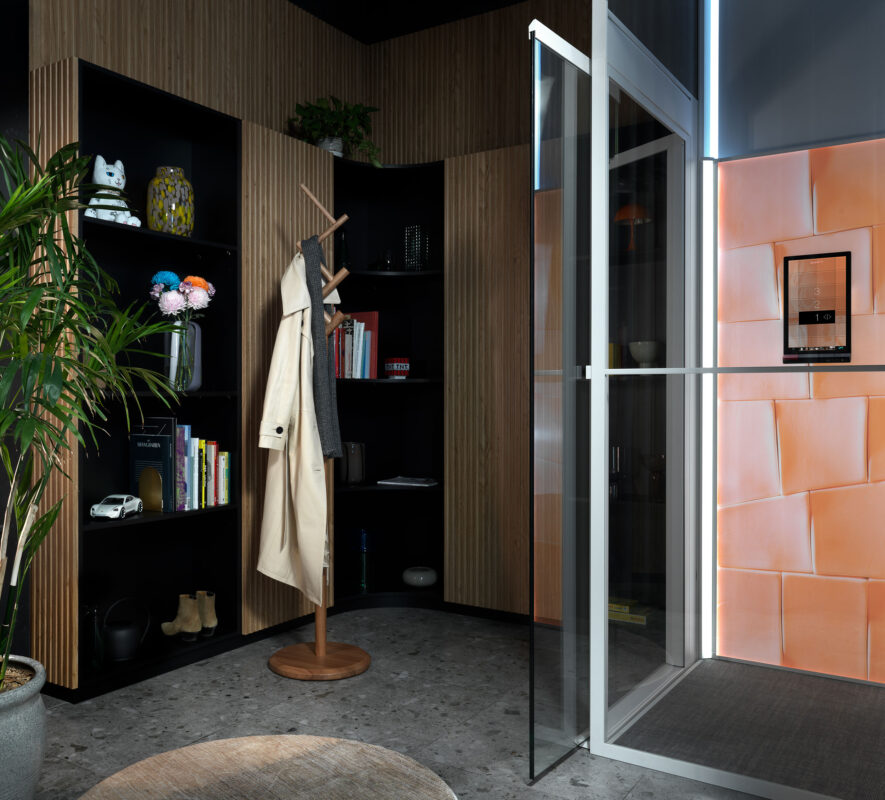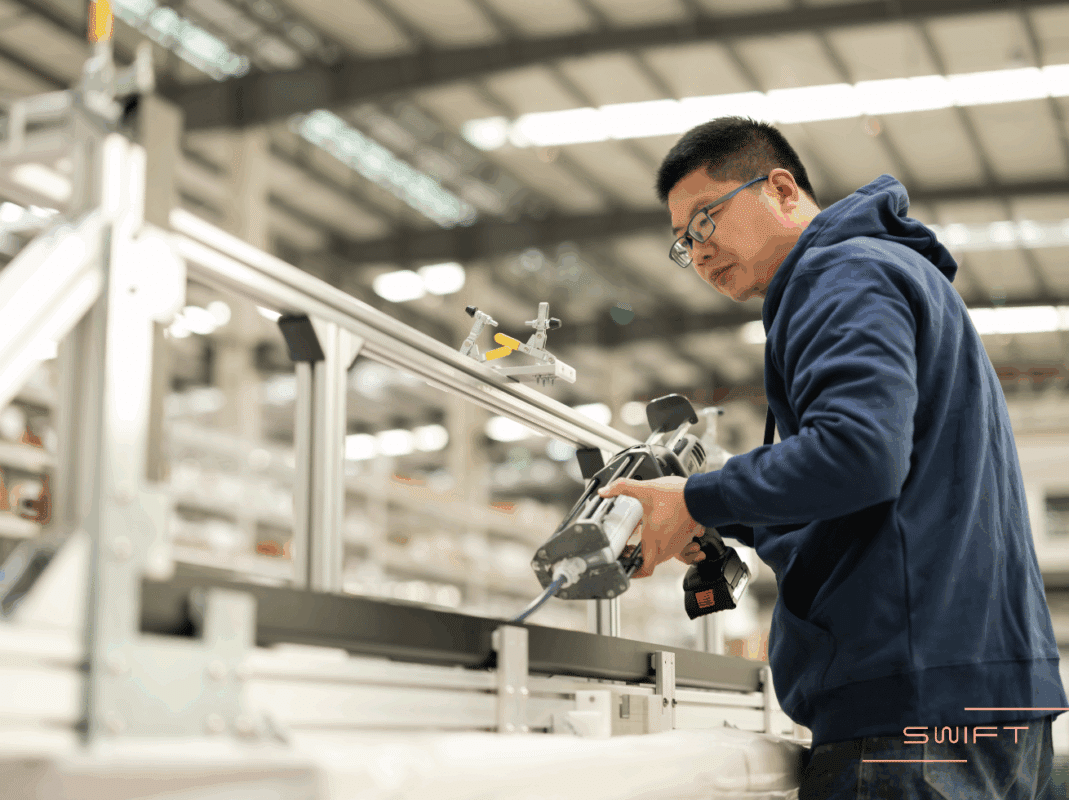
Luxury home elevators in India are becoming essential for luxury homes, combining aesthetics with convenience and accessibility. As modern design and multigenerational living gain traction, demand is rising. Beyond enhancing interiors with glass panels and fine wood finishes, they improve mobility, especially for older people and those with mobility challenges.
Elevators elevate style and comfort with features like voice activation and energy-efficient designs. Whether subtle or a statement piece, they redefine luxury living and boost property value.
Explore luxury home elevators, their types, and much more below.
Why Homeowners In India Are Investing In Custom Residential Elevators
Increasingly, homeowners in India are investing in customized residential elevators. This is because of the growing demand for personalization in-home solutions that meet the needs of homeowners’ lives and resonate with their style. Modern architectural trends feature space-efficient designs, making compact, stylish elevators a great addition to these multi-story homes.
Practical reasons also hold suitable for aging in place, ease of climbing stairs for seniors, and other mobility-challenged people will be facilitated in their homes. As urban living progresses, personal residential elevators become investments as they perfectly blend luxury with practicality for future-ready home design.
Types Of Luxury Home Elevators
-
Hydraulic Elevators
The elevators operate based on a hydraulic piston system, pushing the cabin upward and allowing it to descend smoothly under gravity. These types of elevators are highly reliable, energy-efficient, and known to function in utter silence.
Hydraulic elevators would be perfect for low to mid-rise homes as they require heavy-duty capacities in luxury residences. However, these systems need a machine room dedicated to the hydraulic pump and oil reservoir, usually in the basement or garage.
-
Screw Driven Lifts
A screw-driven home lift is a type of vertical lift that uses a screw-and-nut mechanism to move the lift car up and down between floors. It’s a popular choice for installing elevator due to its safety, reliability, and compact design. Their sleek, transparent design adds a futuristic touch to premium homes.
Installation is relatively quick compared to other elevator types. However, they have a lower weight capacity, making them more suitable for personal use rather than carrying heavy loads or multiple passengers simultaneously.
-
Traction Elevators
Designed for efficiency and speed, traction elevators use steel ropes and counterweights to move the cabin. They are commonly found in high-rise residences and multi-story villas because they consume less energy than hydraulic elevators and offer a smooth, fast ride.
Unlike hydraulic systems, traction elevators do not require a machine room, making them space-efficient. However, they need regular maintenance to ensure the cables and motor remain in optimal condition.
-
Custom Glass & Designer Elevators
Glass elevators offer stunning views for homeowners wanting an elegant, eye-catching addition to their abode, gracefully in tune with modern interiors. The elevators are entirely customizable with tinted or frosted glass, specialty designs in the cabins, and innovative features such as ambient lighting or touchless controls.
On the other hand, the design of elevators focuses on aesthetics that use premium materials for sights like wood, marble, or metal finishes that complement the home’s overall style. These may provide all the glamour that can be wished for, but careful planning will be required to maintain structural integrity and privacy wherever necessary.
Features of Custom Residential Elevators
- Premium Materials – To enhance durability and aesthetics, custom residential elevators are designed with high-end materials such as stainless steel, tempered glass, and fine wood. Homeowners can choose from various finishes, including brushed metal, mirrored glass, or even handcrafted wooden panels, ensuring the elevator blends seamlessly with the home’s interior design.
- Smart Controls – Modern luxury elevators come equipped with advanced technology, including touch screen panels, AI-powered voice commands, and remote monitoring via smartphone apps. These features allow homeowners to control the elevator’s functions effortlessly, set preferred speed and lighting, and even integrate the system with their home automation setup for a brilliant living experience.
- Quiet & Seamless Operation – High-quality engineering ensures custom residential elevators operate smoothly with minimal noise and vibration. Advanced motor systems and precision engineering provide a near-silent ride, making them an ideal addition to any luxury home. This is particularly beneficial for homes where peace and tranquility are a priority.
- Safety Enhancements – Safety is a top priority in residential elevators, and modern systems come with essential features such as emergency braking, power backup during outages, and auto-rescue operations that ensure the cabin reaches the nearest floor safely in case of a malfunction. Additional features like door sensors, overload protection, and anti-slip flooring further enhance passenger security.
Choosing The Right Luxury Elevator For Your Home
Selecting the right luxury home elevators requires careful evaluation of key factors to ensure it meets both practical and aesthetic needs.
- Space – The available space in your home determines installing an elevator in the house. Compact models like screw driven lifts are ideal for limited areas, while larger hydraulic or traction elevators suit spacious dwellings.
- Budget – Luxury elevators vary in cost based on technology, materials, and features. Setting a clear budget helps you select an option that balances elegance and efficiency.
- Aesthetics – The design should seamlessly blend with your home’s interiors. Options range from sleek glass and stainless steel finishes to classic wood-paneled cabins for a personalized touch.
- Functionality – Consider the primary purpose—whether for elderly family members, enhanced accessibility, or pure luxury. Features like smart controls, quiet operation, and safety enhancements should align with your needs.

The Installation Process & Maintenance Requirements
Home elevator installation involves careful planning and regular upkeep to ensure long-term efficiency.
Step-by-Step Installation & Maintenance Guide
1. Site Assessment & Planning
Before installation begins, experts comprehensively evaluate the space, considering factors such as available structural support, power supply, and accessibility. They assess the layout to determine the best location for the elevator while ensuring ease of future maintenance. Key elements like load capacity, entry/exit points, and emergency access are also planned to align with homeowner preferences and safety standards.
2. Design & Customization
Homeowners work closely with professionals to choose elevator materials, finishes, and advanced features such as smart controls, automated doors, and energy-efficient lighting. Durability and low-maintenance options are prioritized to reduce long-term servicing costs. For customized residential elevator installation, engineers design layouts that optimize available space while ensuring aesthetic integration with the home’s décor.
3. Permits & Approvals
Installing elevator requires obtaining necessary permits and adhering to local building codes and safety regulations. Professionals handle the submission of documentation, ensuring compliance with zoning laws, structural guidelines, and electrical safety requirements. Local authorities may mandate inspections before and after installation to guarantee compliance.
4. Shaft Construction & Setup
Depending on the type of elevator, a dedicated shaft may be required. Traditional cable-driven or hydraulic systems need a structured shaft with reinforcements, while modern pneumatic lifts or compact models require minimal structural changes.
The shaft is constructed with proper ventilation, lighting, and accessibility considerations. Routine servicing, such as inspecting the guide rails, counterweights, and safety brakes, helps maintain peak performance.
5. Home Elevator Installation & Electrical Setup
Installation specialists assemble the elevator cabin, motor, and operational controls. Electrical wiring is integrated with the home’s power system, and emergency backup solutions, such as battery-operated descent features, are installed.
Safety features like interlocks, motion sensors, and communication systems are configured. Regular inspections of wiring, control panels, and emergency systems ensure continued reliability and prevent premature wear and tear.
6. Final Inspection & Testing
Once installation is complete, technicians conduct rigorous safety tests, including load testing, emergency stop trials, and system responsiveness checks. Homeowners receive a detailed briefing on operation, troubleshooting, and recommended maintenance schedules. Essential upkeep tasks include annual servicing, lubricating moving components, checking for software updates (if applicable), and ensuring smooth track alignment.
Installation ranges from ₹5–50 lakhs depending on customization, while annual maintenance costs ₹25,000–₹1,00,000. Investing in regular servicing ensures longevity and prevents costly repairs.
Conclusion – Experience Luxury & Convenience By Installing Elevator
Investing in luxury home elevators is more than just adding convenience—it’s about enhancing your lifestyle. A well-designed elevator improves accessibility, adds elegance, and increases your home’s value. Advanced technology and seamless operation ensure comfort and safety for years to come.
Looking for the perfect home elevator? SWIFT Lifts offers premium, customized solutions tailored to your space and style. From sleek designs to innovative technology, SWIFT Lifts ensures smooth installation and reliable service.
FAQs
The cost of a luxury home elevator in India varies based on the type, customization, and features. Prices typically range from ₹15 lakhs to ₹50 lakhs, with high-end bespoke designs costing more.
It depends on the type of elevator. Hydraulic elevators usually need a machine room, while traction and pneumatic elevators come with machine-room-less (MRL) options, saving space and making installation easier.
Most home elevators operate on single-phase or three-phase power, depending on the model. Energy-efficient options are available, with average power consumption similar to common household appliances.
Yes! Many modern home elevators, like pneumatic and compact traction models, are designed for retrofitting. Structural modifications may be required, but space-saving options are available.
Annual maintenance costs range from ₹25,000 to ₹1,00,000, depending on the elevator type, service plan, and frequency of servicing. Regular maintenance ensures smooth operation and extends the elevator’s lifespan.
Get in Touch!










